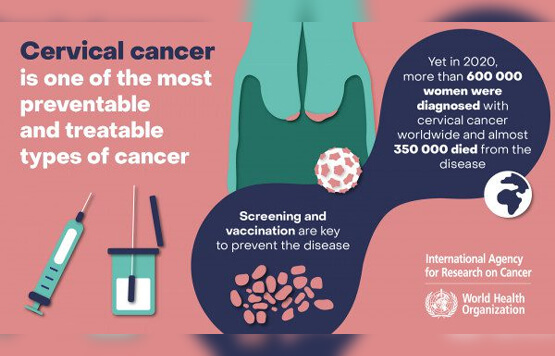Cervical cancer is a stealthy adversary that affects thousands of women throughout the world. Despite its frequency, this subject is frequently treated with sensitivity. This blog will shed light on the path women take in their fight against cervical cancer, as well as the need to break the silence around it.
World Cervical Cancer Awareness Month is an annual global healthcare event that takes place during the full month of January intending to raise global awareness of cervical cancer. The theme for this year of World Cervical Cancer is ‘Learn, Prevent, Screen’ thus emphasising the necessity of educating people with knowledge and awareness about minimising this cancer risk and the life-saving importance of regular screenings.
Cancer arises when normally functioning cells undergo mutation and multiply uncontrollably, forming a tumour mass in any tissue. Cervical cancer occurs when cervical cells proliferate (proliferate in number or multiply) uncontrollably. The cervix is the female reproductive system's narrowest and lowest component. During pregnancy, the uterus holds the foetus. The birth canal is made up of the vagina and the cervix. The cervix's main function in a healthy woman is reproduction, retaining the developing baby in the uterus. The challenging matter is that it doesn’t show noticeable symptomsin its early stages thus creating more problems in women.
A lot of women start their fight against cervical cancer with standard screenings like Pap smears and HPV tests. These examinations are essential for identifying cervical anomalies and facilitating early treatments. Women must get past any reservations or anxieties and make routine screenings a priority.
Receiving a cervical cancer diagnosis can be quite distressing. Women experience a spectrum of emotions, including uncertainty, melancholy, and dread. The assistance of loved ones, friends, and medical professionals turns into a crucial component of the process. A sense of belonging and understanding can be fostered by discussing feelings and experiences with those who have gone through comparable struggles.

Depending on the disease's stage, surgery, radiation treatment, or chemotherapy may be used to treat cervical cancer. There are often emotional and physical obstacles in the way of healing. Women may struggle with side effects, shifting perceptions of their bodies, and recurrence anxiety. Finding the best support for these issues and addressing them requires open discussion with medical professionals.
The stigma surrounding cervical cancer often leads to silence. Women may feel hesitant to discuss their experiences due to societal taboos or misconceptions. Breaking this silence is crucial for several reasons. It encourages open conversations about prevention, early detection, and the emotional impact of the disease. It also helps reduce the stigma associated with cervical cancer, fostering a supportive environment for those affected.
One of the most important aspects of the fight against cervical cancer is empowering women to take control of their health. This includes raising awareness of the value of HPV immunizations, urging routine screenings, and offering emotional support resources. Campaigns for education and awareness are essential in debunking rumours and false beliefs and empowering women with the information they need to defend themselves.
The Child Help Foundation has always monitored the health crises that women face and assisted them in receiving treatment, in collaboration with its crowdfunding partner Filaantro. Financial assistance is given to children, particularly girls, in cases of life-threatening illnesses. Under the Sustainable Development Goal of Emergency Medical Support, 3023 children have received effective care. Many children have benefited from excellent treatments thanks to the donor, and in addition to these awareness campaigns, periodic medical check-ups in remote regions help ensure that these children receive the proper care at the right time.
The fight against cervical cancer is a complex one that involves emotional health, therapy, and diagnosis. Breaking the taboo around this illness is our common duty. Let's work together to create a future where women are empowered to prioritize their health, have early detection of cervical cancer, and receive the necessary support to enable a full recovery by exchanging stories and raising awareness.
